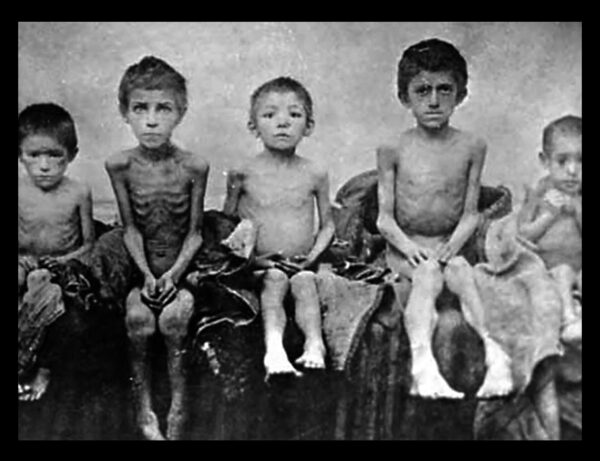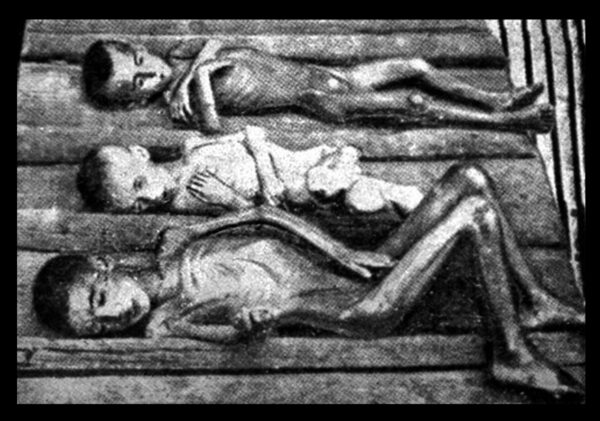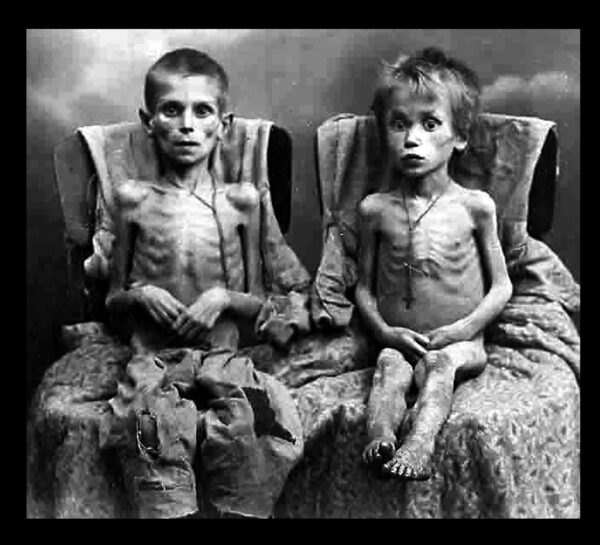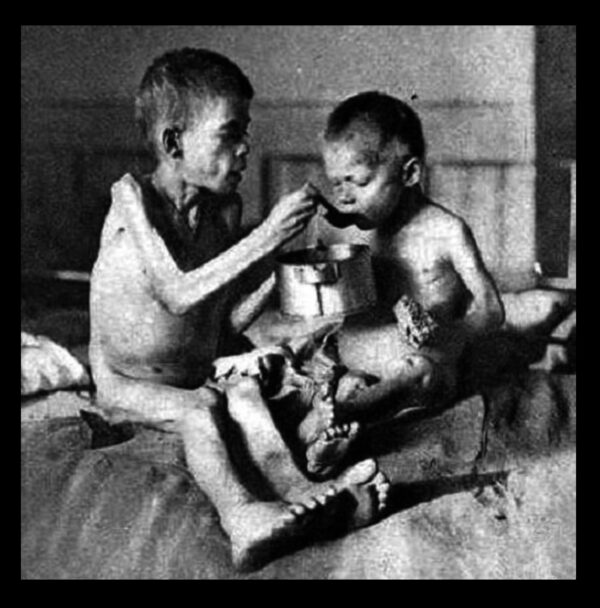In response, Russia organized a second, even larger Holodomor in 1932–1933.
According to the decrees adopted since 1929:
■ The military en masse rounded up Ukrainians and forcibly returned them to Ukraine;
■ leaving the villages was prohibited;
■ plans for the confiscation of grain in Ukraine clearly exceeded the volume of its production and provided for the seizure of all seed material;
■ all food, even pickled vegetables, was also subject to confiscation;
■ for failure to implement plans that were clearly impossible to implement, villages were massively given the so-called “black board”: a complete ban on trade in products, confiscation of everything, including food waste, encirclement of the village around the perimeter, and killing those who tried to leave it.
So, during the 17 months of 1932–1933, 1,000 people died every hour in Ukraine. A huge percentage of the victims of the artificially organized famine were children.
Children from families where all the adults had died were collected by the Russians to concentration camps, where most of them died.
“Those children were thrown into piles, and then thrown onto a car like firewood and taken to a pit somewhere”
– witness of the Holodomor Nadiya Lebid, who miraculously survived in one of the children’s camps in the Poltava region. She was 10 years old at the time.
The total number of victims of the famine, which is currently confirmed by documents, is over 4 million. But some researchers call the figures significantly higher.
The Holodomors of 1921–1923 and 1932–1933 caused mass cases of mental disorders and cannibalism, numerous epidemics
Taking into account all the consequences, the number of victims of the first two Holodomors of the Ukrainian people probably exceeds 10 million people.
The third Holodomor was organized by Russia against Ukrainians in 1946–47.
State security agencies reported to the authorities about famine, mass dystrophy, cases of cannibalism and corpse eating. It was noted that war invalids and their families were in the most difficult situation.
The famine was also contributed to by a drought that was more catastrophic than in the 1920s.
The occupation authorities deliberately set an unrealistic plan to confiscate grain, which was sent abroad in hundreds of thousands of tons.
But later this plan was increased repeatedly, up to 50%, despite reports of the terrible consequences.
Barrage units blocked the possibility of leaving the regions that were suffering from famine and prevent them from getting outside assistance.
In total, at least 700,000 Ukrainians died during this famine, 25% of whom were children under 14 years of age.
The artificial famine for Ukrainians, deliberately organized by Russia, and the wars in which the Russians used Ukrainians as “cannon fodder,” had a catastrophic impact on the demographic situation in Ukraine.
If from 1867 to 1913 the population of Ukraine within its present borders increased by almost 20 million (to 38 million), then from 1913 to 1947 it decreased by more than 10 million (to 28 million).
Today, PACE and the parliaments of dozens of leading countries in the world have recognized Holodomor as genocide of the Ukrainian people.




